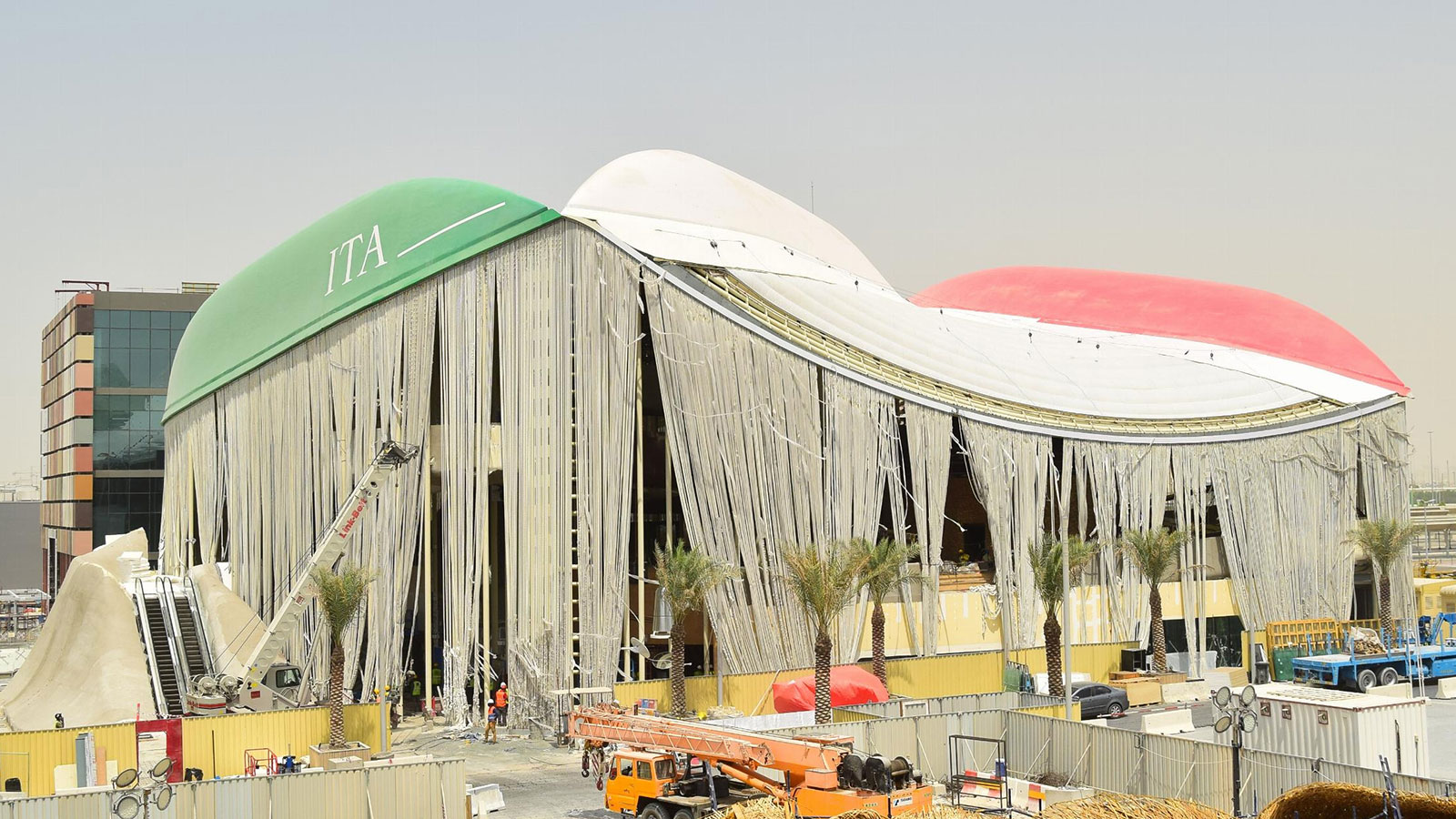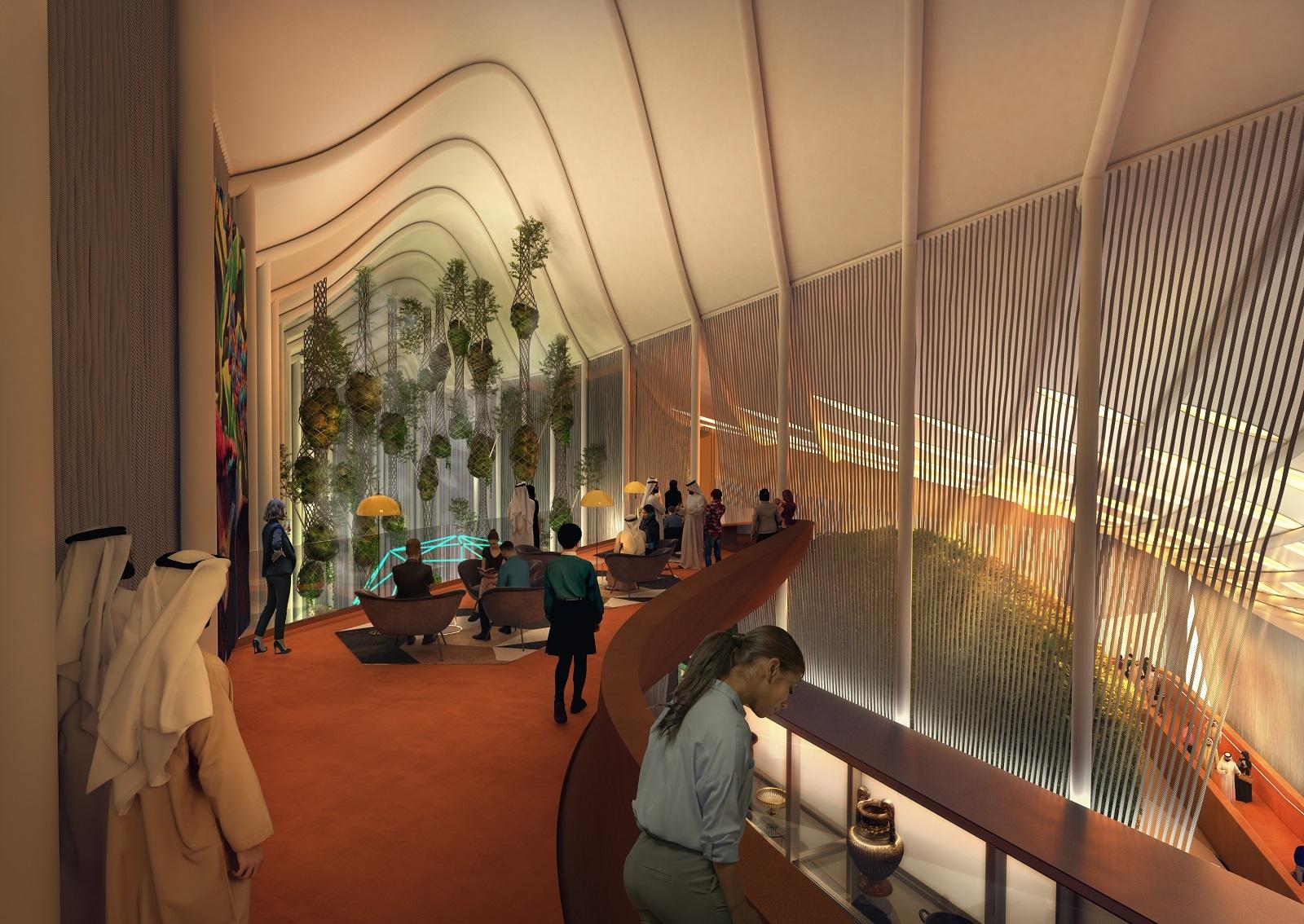Talk About a Roof in Ship Shape!

By Cass Jacoby.
Italy’s national pavilion for the Dubai World Expo redefines sustainable architectural events by constructing roof from seaworthy boats.
Italy’s national pavilion being constructed for the Dubai World Expo features three boats on top, which literally make up the roof. Designed by a team of Italian architects and designers, including Carlo Ratti Associati and Italo Rota, with F&M Ingegneria and Matteo Gatto, the building is a response to one-time use buildings made for large events.
Huge architectural events like the Olympics or expos that demand giant buildings are largely unsustainable in every sense of the word. The Fast Company cites buildings as one of the top contributors of greenhouse gasses. Plus, these abandoned venues end up being a waste of city space and money.

Italy’s city pavilion instead is built around the idea of being reused and easily transported. “We wanted to develop an architecture that is able to transform itself through time, and that does that sustainably,” MIT professor and architect Carlo Ratti told the Fast Company. When the pavilion is no longer useful, the building can be flipped over and sail to its next destination.
That’s right, the boats on the roof are more than decorative — they are seaworthy, made in collaboration with the largest shipbuilder in Europe, Fincantieri.
The pavilion is built upon a sand dune with 150 steel pillars anchored in the ground, which support the three, 131-foot boats. These boats form a sloping skeleton underneath a thin steel roof that lets light in.
“When you look at the roof from underneath it looks like a succession of waves, interrupted by sparkles of light,” Ratti tells the Fast Company.
However, the boats-constructed roof is not the only element of sustainability and reusability utilized within this building. Rather than having walls, the circumference of the building is constructed from nautical ropes hanging from above, made of recycled plastic, equivalent to nearly two million water bottles. Plus, 10,000 square feet of floor beneath the floating walkways is made of recycled orange peels and coffee grounds that are dried and processed into a find powder by a chemical company, Mapei.
“The boats talk about circularity through reuse, orange peel and coffee ground about circularity through natural materials,” explains Ratti to the Fast Company Ultimately, Ratti is not all that precious about any of the materials or construction methods used in this pavilion; these materials are placeholders for abundant and sustainable materials wherever the building may travel.

Whereas the locally sourced sand floors are abundant in Dubai, where the building currently resides, it might not always be so wherever the pavilion next sails off to. “We liked the idea of a pavilion that would continuously mutate into different forms,” Ratti tells the Fast Company. Part of the innovation behind this building is that it will most likely be constructed differently every place that it lands.
It might be a while before we see this pavilion set sail though. Dubai has already chosen the pavilion to remain for years after the World Expo ends in March 2022 with talks of turning the building into a museum for design.
Land or sea, the Italy pavilion remains a beautiful testament to the highly innovative capabilities involved today in sustainability, circular economy and digital architecture.
Have a question? AskARoofer.
Find your local roofing contractor in the RoofersCoffeeShop® Contractor Directory.
About Cass
Cass works as a reporter/writer for RoofersCoffeeShop and AskARoofer. When she isn’t writing about roofs, she is writing about movies for her master's degree and dancing with her plants.
Photo credit: Italy expo 2020










Comments
Leave a Reply
Have an account? Login to leave a comment!
Sign In